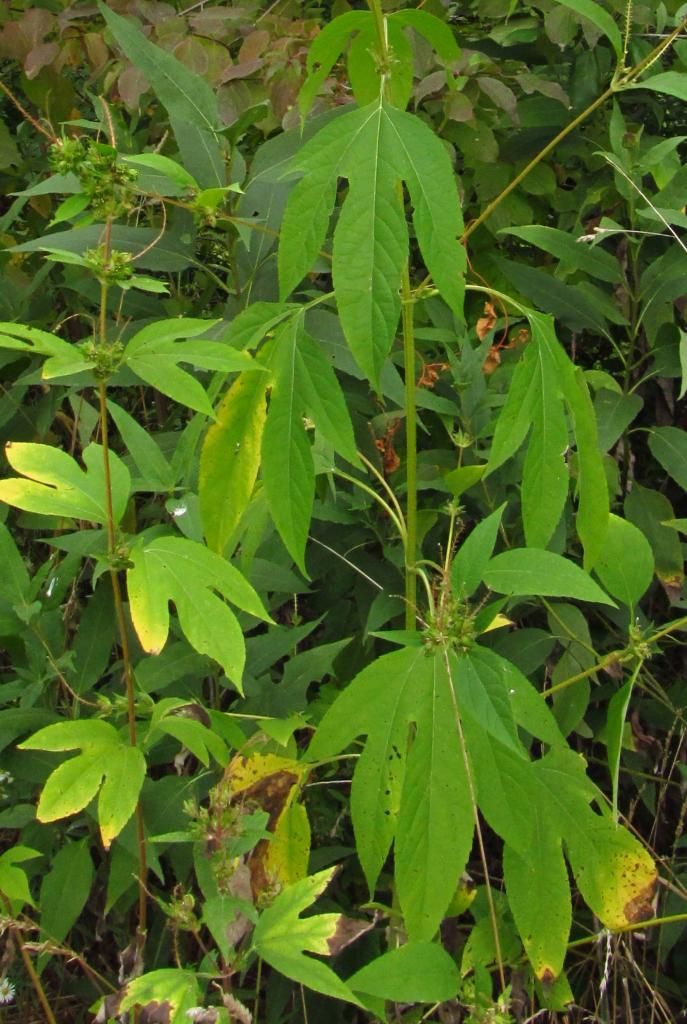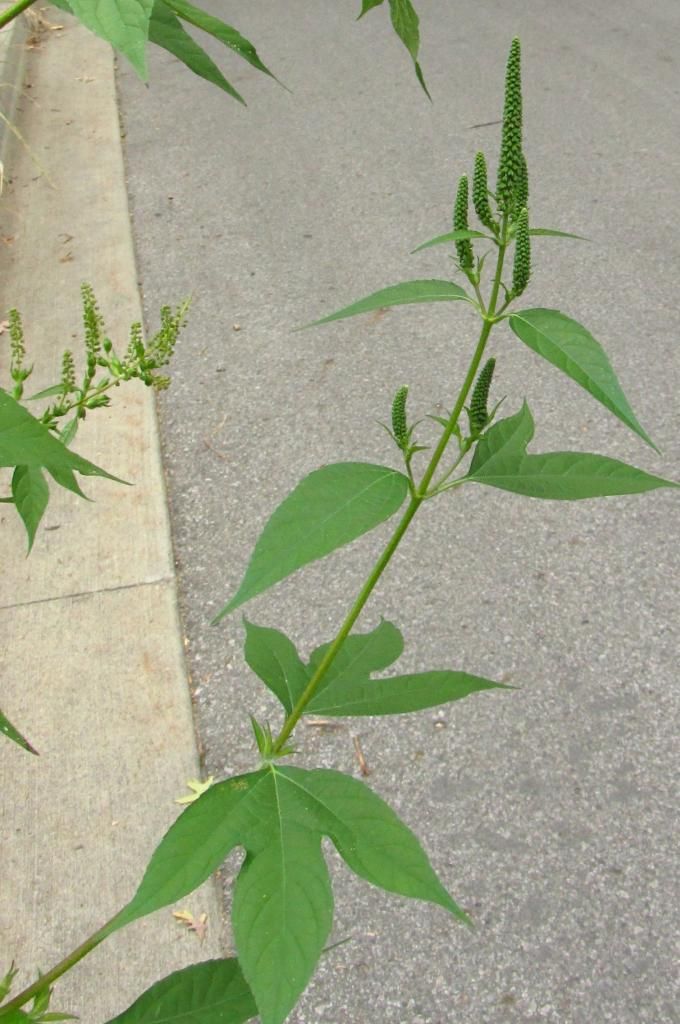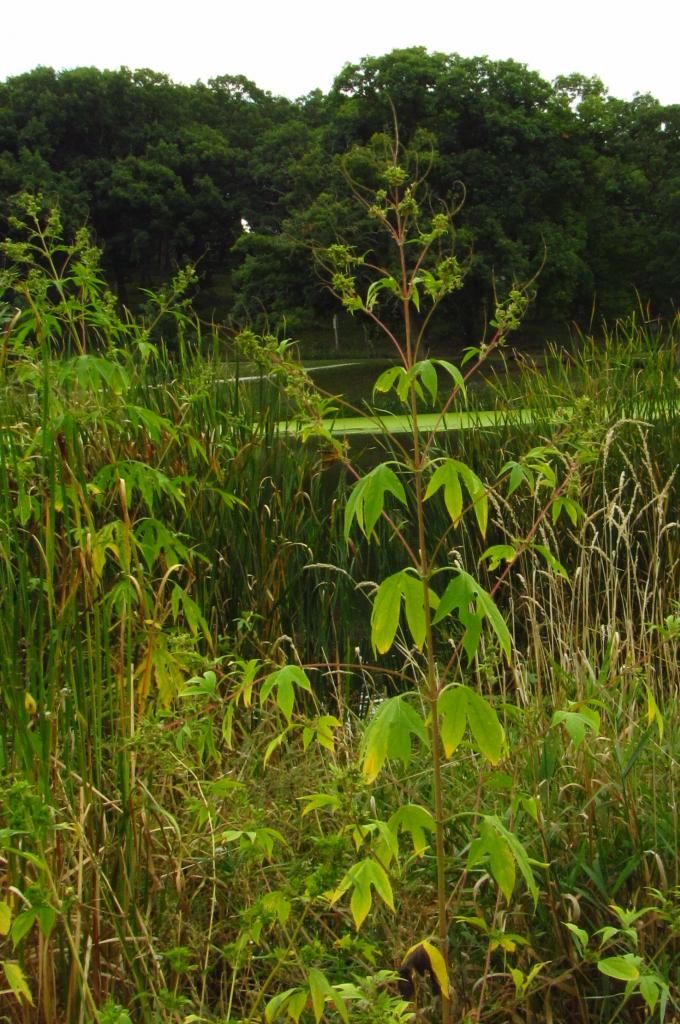Hot, dry weather in July and August spawned record-breaking pollen counts in some parts of Iowa last month. Follow me after the jump for pictures of the wildflower most hated by hay fever sufferers. Not goldenrod, which also blooms in August and September and is often wrongly blamed for late summer seasonal allergies. I’m talking about giant ragweed.
This is an open thread: all topics welcome.
Giant ragweed (Ambrosia trifida) is a member of the aster family that thrives in many habitats.
It can be found in disturbed areas of moist to mesic black soil prairies, especially along the margins near woodlands or fields. Other native habitats include disturbed areas of moist clay prairies, meadows in woodland areas or near rivers, thickets, and woodland borders. In more developed areas, it occurs in vacant lots, cropland, abandoned fields, poorly drained waste areas, areas along roadsides and railroads, and fence rows.
As the common name suggests, giant ragweed is the tallest of the ragweed plants. It can grow up to twelve feet tall, but I’ve rarely seen them taller than seven or eight feet. I took these photos recently near Greenwood pond in Des Moines.
The stems of giant ragweed have opposite leaves, which are deeply lobed except near the top of the plant.
Cutleaf coneflower, another late summer bloomer in Iowa, also has deeply lobed leaves, but the leaf edges are much more coarsely serrated, and the flowers look nothing like giant ragweed.
At the top of most giant ragweed stems, “a cylindrical spike of flowers” a few inches long develops. Here’s a closer look at those flowers before they bloom. You can see that near the top of giant ragweed plant, leaves are not lobed.
Pollen from male giant ragweed flowers travels easily by wind, causing misery for millions of people. The flowers are very small and hard to photograph. Some good pictures are on the Lady Bird Johnson Wildflower Center’s website. Here’s my attempt to capture the flowers.
In this shot you can see giant ragweed blooming in the foreground and deeper yellow goldenrod flowers in the background.
Few people have anything good to say about this plant, but apparently some native American tribes
rubbed crushed leaves on insect bites and steeped the leaves to make a tea taken for fevers and pneumonia and used as a wash for hives. The root was chewed to alleviate fear at night. Stem fibers were used as thread.
Giant ragweed seeds are surprisingly large. You can see some in this photo of a plant that bloomed weeks ago.







1 Comment
I will say something good about this plant:-)
Some birds just love those big seeds, and a giant ragweed patch is a good place to look for native sparrows and other interesting migrants in the fall. And giant ragweed does grab hold of disturbed soil and helps to stabilize it, a useful function..
PrairieFan Sat 29 Apr 8:09 PM